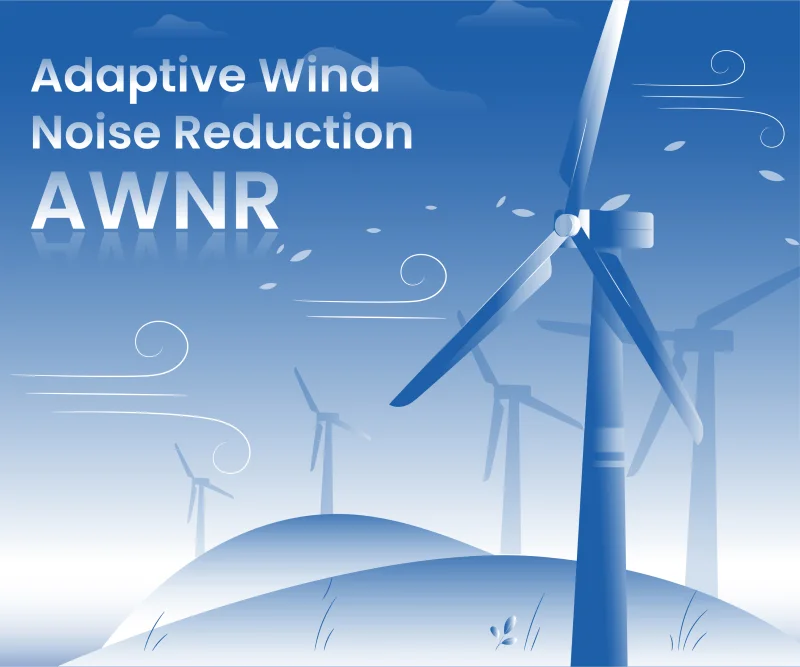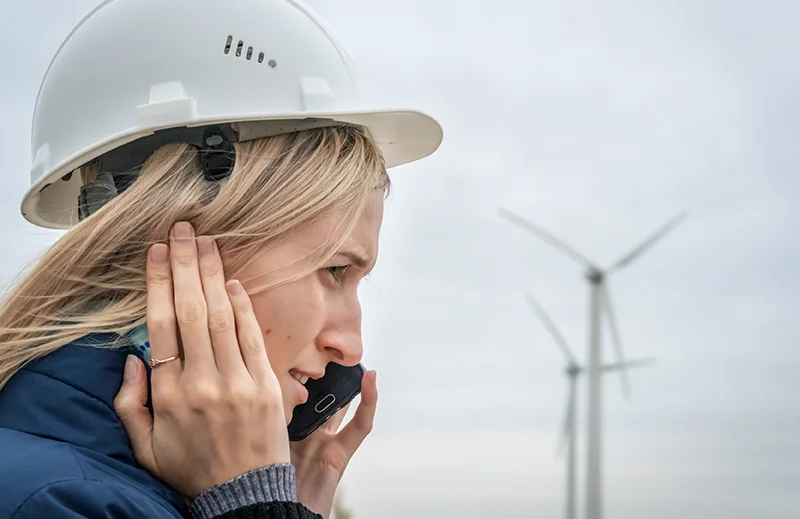|
|
 |
 |
When wind strikes the surface of a microphone, it causes an effect known as "wind noise". Similar noise is produced when the microphone surface is rubbed while recording. |
|
A passive way to reduce wind noise is the usage of windscreens made of open cell foam, fur, or other materials. Windscreens are effective solutions but have disadvantages such as size and durability. Windscreens are usually not used in communication devices. A proper acoustic and mechanical design avoids sharp edges in the microphone proximity lessening the amount of wind turbulences but not completely eliminating the wind noise. Installation of woven fabric layers in the microphone porting assembly may dramatically reduce the impact of the turbulences on the microphone signal and should be used in all devices designed for outdoor usage. Unfortunately, designers of consumer electronics devices are often limited in their abilities to make a proper windproof design due to marketing requirements, time, budget, and other limitations. This results in terrible performance in windy conditions. There are currently many consumer and even non-consumer products on the market with built in microphones (headsets, phones, video and still cameras) where even the slightest wind causes a hurricane effect on the microphone signal. Alango provides a “software only” Adaptive Wind Noise Reduction (AWNR) solution. Wind noise is automatically detected and then significantly attenuated while clear speech in quiet conditions is fully preserved. Wind noise character may differ for different devices and use conditions. AWNR fully exploits the advantages of Alango sub-band processing. Problematic frequency regions containing wind noise are automatically detected and wind noise is suppressed only in contaminated frequency bands. The clean signal remains unaffected.
Use control buttons on the interactive screenshots to play/stop/navigate |
|
A dual microphone Bluetooth headset in presence of a strong wind. Listen for the signal recorded by the first microphone (unprocessed): |
A dual microphone Bluetooth headset in presence of a strong wind. Listen for the output of Alango dual microphone technology (ADM) including Adaptive Wind Noise Reduction: |
|
Mobile phones, Bluetooth headsets, and others.
Although it can be used standalone, Adaptive Wind Noise Reduction technology (AWNR) is integrated into Adaptive Dual Microphone technology (ADM). In its turn, ADM is a part of Alango Voice Communication Package (VCP). The package also includes acoustic echo cancellation, stationary noise suppression, dynamic range compressor and several others. |